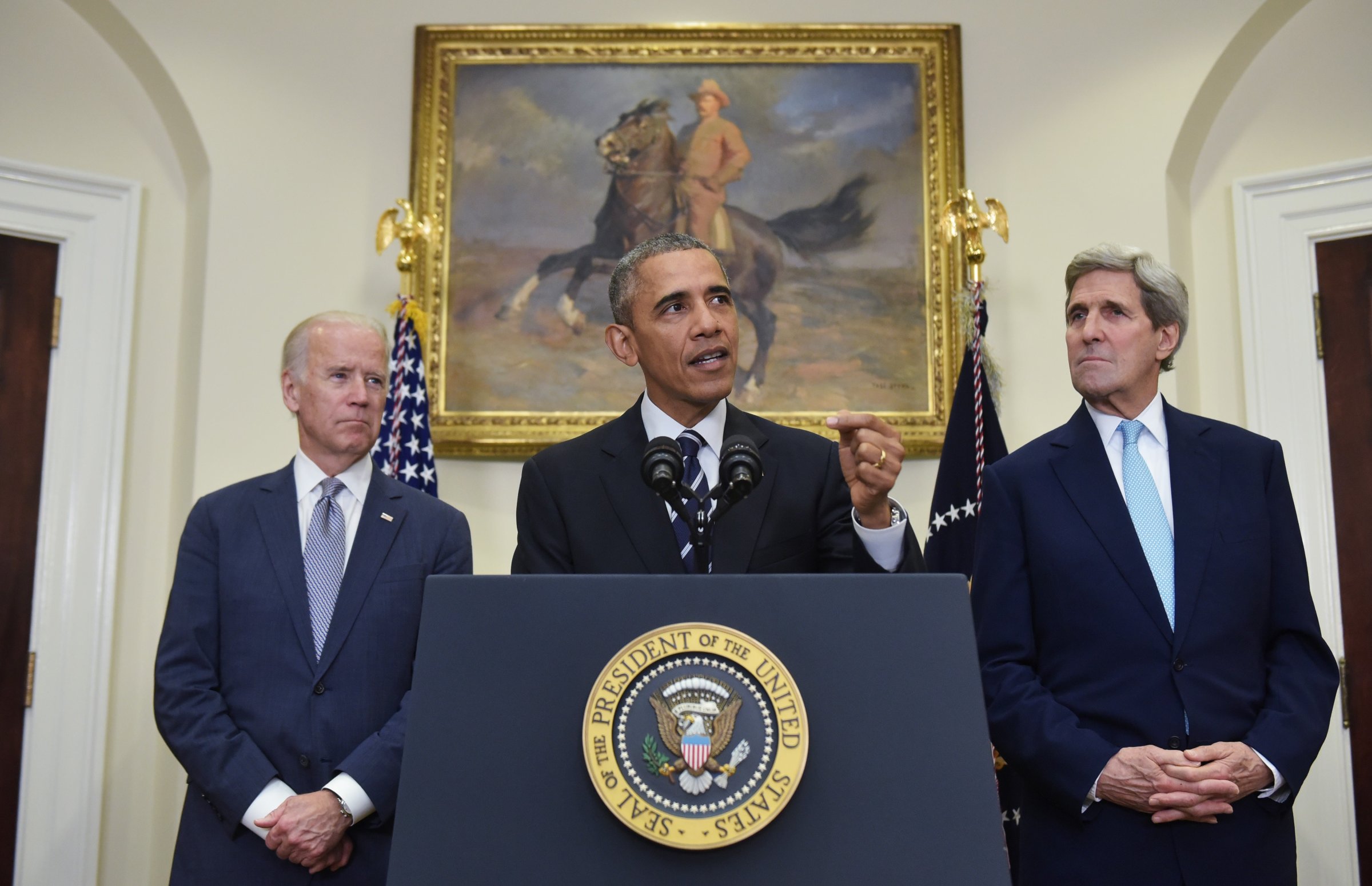
The phrase “keep it in the ground” has become a rallying cry for some of the most dedicated climate change activists. The government should stop allowing energy companies access to untapped sources of oil and gas, the activists say.
But, despite the attention the movement has brought to climate change, activists have been left to read between the lines for any indication of what President Obama’s White House thinks of their efforts. Last week, activists received perhaps the clearest indicator of the White House view when the President’s chief science advisor John Holdren described the activists’ demand as “unrealistic.”
“The notion that we’re going to keep it all in the ground is unrealistic… We are still a very heavily fossil fuel dependent world,” said Holdren at an Energy Information Administration (EIA) conference last week. “You don’t overturn a $25 trillion investment overnight.”
Read More: President Obama Announces Rejection of Keystone XL Pipeline
The statement marks the most recent comment from the administration suggesting skepticism at the “keep it in the ground” movement. Interior Secretary Sally Jewell described “keep it in the ground” as “naïve” in a May interview with the Desert Sun news.
But President Obama has also seemed to suggest some sympathy for the movement with his rejection of the Keystone XL pipeline last fall. “We’re going to have to keep some fossil fuels in the ground rather than burn them and release more dangerous pollution into the sky,” he said at the time, borrowing from the movement’s rhetoric.
The statements have left climate campaigners playing a bit of White House Kremlinology to determine exactly where the President stands. “These are contradictory messages and they are very disappointing and frustrating,” says Marissa Knodel, climate campaigner at Friends of the Earth.
In a sense, the two sides seem to be talking past each other. Saying that the U.S. cannot transition entirely away from fossil fuels overnight should be an anodyne statement for anyone with even the slightest understanding of the energy industry. Coal and natural gas provide two thirds of the energy for electricity in the U.S., according to the EIA. Renewable energy sources like solar and wind have become cost competitive with fossil fuels, but energy companies still need to develop a fail-safe method to store their energy for times when the sun does not shine and the wind does not blow.
Read More: Environmental Activists Prepare for Next Fight After Keystone Victory
But “keep it in the ground” activists aren’t asking for 100% renewables overnight. Instead, they have asked Obama to use his executive authority to stop leasing public lands for oil and gas drilling. That would halt some future fossil fuel extraction, but far from all of it.
“This doesn’t mean turning the lights off tomorrow. It means an end to 30, 50-year decisions to allow drilling,” said Jason Kowalski, policy director at the climate advocacy group 350.org, in an interview last December.
On Wednesday morning, the White House clarified Holdren’s statement on America’s heavy dependence on fossil fuels to suggest that he was referring to a call to “leave all the remaining fossil fuels in the ground.”
“The U.S.—and the world—still depend on fossil fuels for more than 80 percent of all the primary energy we use,” said spokesperson Lindsey Geisler in a statement. “It’s not practical or affordable to replace the huge, fossil-fuel infrastructure with nuclear and renewables overnight, no matter how badly we may want to.”
That answer is unlikely to please “keep it in the ground” groups, who point to research that suggests humans need to leave a third of oil reserves, half of gas reserves and 80% of coal reserves unused between 2010 and 2050 to keep global temperatures from rising more than 2°C—a level of warming deemed unsafe by scientists. Activists argue that ending new federal oil and gas leases would be a good step to meeting the 2°C target, which was set by countries around the world in the Paris Agreement last fall.
“The science shows us that not only do we need to keep the majority of fossil fuels in the ground,” says Knodel. “We’ve already released more fossil fuels than can be burnt.”
More Must-Reads From TIME
- The 100 Most Influential People of 2024
- Coco Gauff Is Playing for Herself Now
- Scenes From Pro-Palestinian Encampments Across U.S. Universities
- 6 Compliments That Land Every Time
- If You're Dating Right Now , You're Brave: Column
- The AI That Could Heal a Divided Internet
- Fallout Is a Brilliant Model for the Future of Video Game Adaptations
- Want Weekly Recs on What to Watch, Read, and More? Sign Up for Worth Your Time
Write to Justin Worland / Washington at justin.worland@time.com